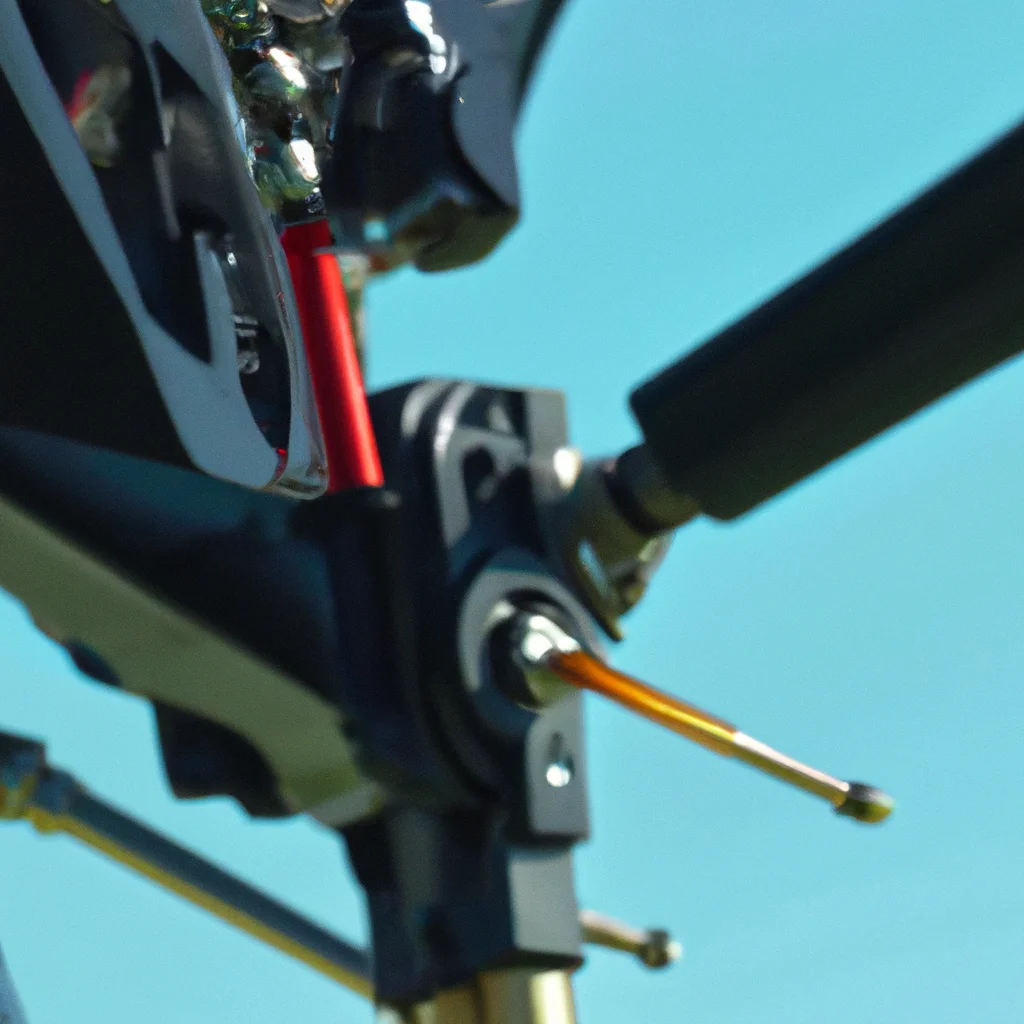How does a helicopter rotor system work?


How does a helicopter rotor system work?
Have you ever wondered how a helicopter stays in the air? It is all thanks to the helicopter rotor system. The rotor blades of a helicopter produce lift that keeps it airborne. In this article, we will discuss the helicopter rotor system, its components, and how it works, as well as the helicopter aerodynamics, mechanics, and engineering behind it.
Components of a Helicopter Rotor System
The helicopter rotor system is made up of several components, including:
1. Rotor Blades
2. Rotor Hub
3. Swashplate
4. Control System
5. Tail Rotor
Rotor Blades
The rotor blades are the most visible part of the helicopter rotor system. They are usually made of lightweight materials like aluminum or composite materials. The rotor blades rotate around the rotor hub, producing lift that keeps the helicopter in the air. The rotor blades’ angle of attack, pitch, and rotation speed determine the amount of lift produced.
Rotor Hub
The rotor hub is the central part of the rotor system. It is attached to the helicopter’s main rotor shaft and supports the rotor blades. The rotor hub provides a rotating platform for the rotor blades to rotate around.
Swashplate
The swashplate is a mechanism that controls the rotor blades’ pitch and angle of attack. It is mounted on the main rotor shaft and is connected to the helicopter’s control system. The swashplate translates the pilot’s control inputs into blade pitch changes, changing the lift produced by the rotor blades.
Control System
The control system of a helicopter consists of the pilot’s controls, the swashplate, and the hydraulic actuators that move the swashplate. The pilot’s controls, which include the cyclic, collective, and yaw controls, send signals to the swashplate and actuate the hydraulic actuators. The hydraulic actuators move the swashplate, changing the pitch and angle of attack of the rotor blades.
Tail Rotor
The tail rotor is used to counteract the torque produced by the main rotor. The torque produced by the main rotor causes the helicopter to rotate in the opposite direction, which is known as torque reaction. The tail rotor produces a sideways force that counteracts the torque reaction, keeping the helicopter stable in flight.
How a Helicopter Rotor System Works
The helicopter rotor system works on the principle of aerodynamics. The rotor blades produce lift by creating a pressure difference between the top and bottom surfaces of the blade. This pressure difference causes air to flow over the blade, generating lift.
The angle of attack of the rotor blades determines the amount of lift produced. The angle of attack is the angle between the chord line of the blade and the oncoming airflow. When the angle of attack is increased, the lift produced by the rotor blades also increases.
The pilot’s controls, which include the cyclic, collective, and yaw controls, change the pitch and angle of attack of the rotor blades. The cyclic control changes the pitch of the rotor blades as they rotate around the rotor hub. This changes the lift produced by the rotor blades, allowing the helicopter to move in different directions.
The collective control changes the pitch of all the rotor blades at the same time. This changes the amount of lift produced by the rotor blades, allowing the helicopter to climb or descend.
The yaw control changes the angle of attack of the tail rotor blades. This changes the sideways force produced by the tail rotor, allowing the helicopter to rotate around its vertical axis.
Helicopter Aerodynamics, Mechanics, and Engineering
The helicopter rotor system is a complex system that involves the principles of aerodynamics, mechanics, and engineering. Aerodynamics is the study of how air moves around objects, while mechanics is the study of how objects move. Engineering is the application of these principles to design and build machines.
The design of a helicopter rotor system requires an understanding of aerodynamics and mechanics. The rotor blades must be designed to produce the necessary lift while being strong enough to withstand the forces of rotation. The rotor hub must be able to support the rotor blades while rotating at high speeds.
The control system of a helicopter requires engineering expertise to design and build. The hydraulic actuators must be able to move the swashplate accurately and quickly to respond to the pilot’s control inputs.
In conclusion, the helicopter rotor system is a complex system that involves several components, including the rotor blades, rotor hub, swashplate, control system, and tail rotor. The rotor blades produce lift by creating a pressure difference between the top and bottom surfaces of the blade. The pilot’s controls change the pitch and angle of attack of the rotor blades, allowing the helicopter to move in different directions. The design and engineering of a helicopter rotor system require an understanding of aerodynamics, mechanics, and engineering principles.
Recent Posts
How do I create an engaging and informative online quiz or assessment?
Creating an engaging and informative online quiz or assessment can be a powerful tool for… Read More
What are the most effective methods for managing and reducing work-related stress in the hospitality industry?
Work-related stress is a common issue in the hospitality industry, where employees often face long… Read More
How can I improve my assertiveness and communication skills in a leadership position?
In a leadership position, assertiveness and effective communication skills are crucial for success. Being able… Read More
What are the key elements of a successful employee recognition and rewards program?
Employee recognition and rewards programs play a crucial role in motivating and engaging employees, as… Read More
How do I effectively manage and respond to customer feedback and reviews?
Customer feedback and online reviews play a crucial role in shaping a company's reputation and… Read More
What are the best strategies for effective time management as a stay-at-home parent?
Effective time management is crucial for stay-at-home parents who juggle multiple responsibilities on a daily… Read More